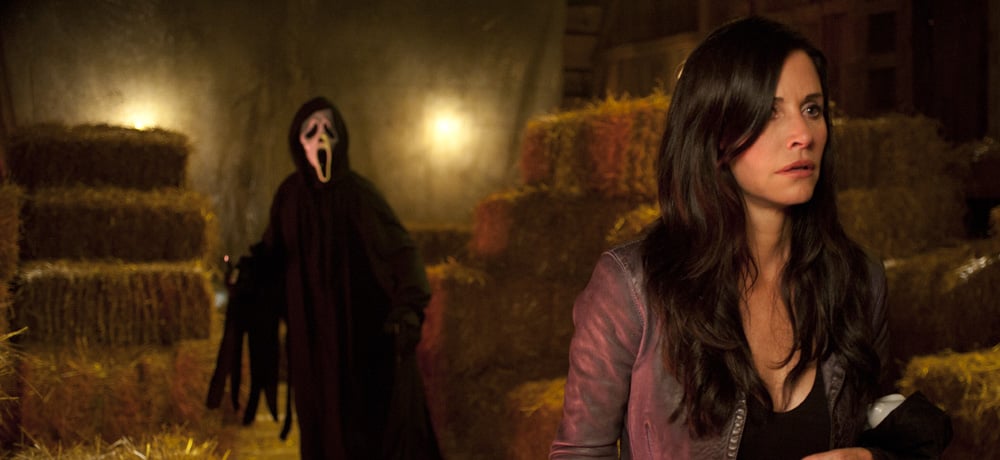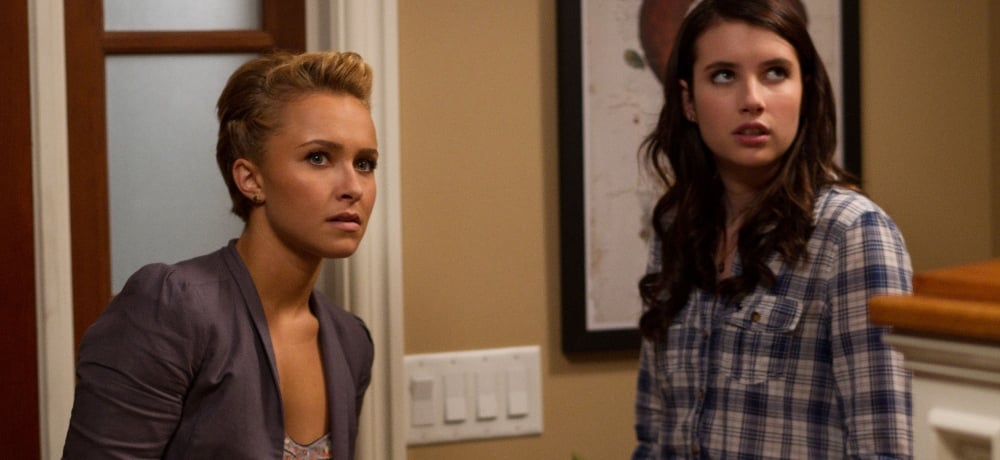


Even though I’m currently in the mix of celebrating indie horror this month, there was no way in hell that I, of all people, would miss celebrating the 10th anniversary of Wes Craven’s Scream 4 today. It’s a film that I’ve been shouting about from the proverbial rooftops for a decade now, and while it’s certainly been more widely embraced by horror fans in the last few years, Scream 4 is an entry in this series that gets far more grief than it deserves, and I think it rivals Scream 2 as the best sequel in the franchise as well. I’ll elaborate on all of that in a minute, but simply put, Scream 4 rules hard, and without a doubt, this final entry in Wes Craven’s oeuvre remains a prescient and thought-provoking examination of the detrimental side of social media and how our world has evolved to a place where we spend most of our time living our lives online.
Throughout his career, Craven changed the landscape of the horror genre multiple times, first with A Nightmare on Elm Street in 1984, and then once again in 1996 with Scream. And I could also make a case for films like New Nightmare and Scream 4 being admirable attempts by Craven to shake things up again within the confines of genre storytelling, but both films ended up being slightly before their time, where it seems like fans just weren’t quite ready to embrace Scream 4 and New Nightmare when they were first released. And the box office receipts certainly support this thesis: Scream 4 brought in only $38.2 million, which wasn’t exactly profitable against the film’s $40 million dollar budget, and considering Scream 3 scored $89.1 million at the box office, there’s definitely a huge chasm between these two entries. And in the case of New Nightmare (which is this writer’s favorite sequel in the series), this seventh film in the franchise only earned $18.1 million at the box office, and when you look at the business that Freddy’s Dead did when it was released ($34 million), that’s definitely a disheartening statistic.
But as most of us know, box office numbers are hardly indicators of the quality of a film, and it’s just nice to see Scream 4 getting a lot more love these days than it did back in 2011. The funny thing is that the first time I saw Scream 4, I thought it was a solid entry in one of my most favorite horror franchises, but when I rewatched the sequel for its Blu-ray release, that’s when everything about it really clicked for me and I had a better grasp on just what exactly Craven was trying to say and do with his final meta-masterpiece. And I’ll be the first to admit that part of that was due to my own lofty expectations going into Scream 4, and I’m not sure there’s a movie out there that could have delivered what I was hoping for before I finally saw it in April 2011. But once I could temper those expectations and just embrace Craven’s vision, that’s when I fully appreciated what the Master of Horror was able to create with Scream 4.
So what exactly did Craven create with Scream 4? A forward-thinking slasher that changed the rules of the series, ultimately resulting in an effort that feels like a cross between a reboot/remake and a faithful sequel to the original Scream all rolled into one (or like the film tells us, it’s “less of a shriek-quel and more a scream-make”). And that’s not exactly an easy feat to pull off, either. But I think the way that Craven was once again able to push the boundaries of visual storytelling with Scream 4 in new and clever ways makes it not only a standout entry in the franchise, but also one of the most ingenious horror movies to come out of the 2010s.
At one point in Scream 4, Gale Weathers (Courteney Cox) tells her husband, Dewey (David Arquette), “You do a remake to outdo the original,” and that’s the perfect mantra for this sequel. From its utterly ingenious opener within an opener (within an opener), Scream 4 knows that fans are hip to its usual games and so it toys with us rather cleverly with the inclusion of scenes from Stab 6 and Stab 7 before immersing us back into present-day Woodsboro. It also pays homage to several beats from the other Scream movies as well, like how Jenny Randall (Amy Teegarden) gets thwarted from escaping Ghostface in the opener by a garage door (clearly a nod to Tatum’s death in the OG Scream), Jill’s arm slash which was reminiscent of Derek’s (Jerry O’Connell) injury at the Delta Lambda Zeta party in Scream 2, the Stab-A-Thon breakdown of horror rules that felt like an updated take on Randy’s (Jamie Kennedy) famous rant at Stu’s (Matthew Lillard) party in Scream, and there’s also the brilliant sequence when Kirby Reed (Hayden Panettiere) has to prove her horror movie knowledge so that she can try and save Charlie (Rory Culkin), who is duct-taped to a chair, much like Scream’s game-changing opening scene featuring Drew Barrymore’s character, Casey Becker, who gets stumped on trivia while her boyfriend Steven Orth (Kevin Patrick Walls) is also detained on lawn furniture via duct tape.

Even beyond that, you also have the close friendship of Jill Roberts (Emma Roberts) and Kirby, who definitely reminded me of Sidney and Tatum in the first Scream film, both physically and in their character’s onscreen relationship as well. And there’s also Gale crashing the Stab-A-Thon to set-up cameras in Scream 4, which is just an extension of her planting the camera at Stu’s shindig in the first film. But most obviously, the biggest example of how Scream 4 is tipping its hat to Craven’s first film in the series is the party set piece that happens at Kirby’s home after the Stab-A-Thon goes awry. Much like she does in the original, Sidney gets confronted by Scream 4’s duo of Ghostface killers in the kitchen, and once again, she is forced to bear witness as the new murderers—Jill and Charlie—reveal their maniacal plans.
Also, and this is something that’s been discussed on social media and I made mention of it when I appeared on the Dead Ringers podcast, too (so I’m not necessarily providing any mind-blowing information here), but even the characters’ wardrobe in Scream 4 during its audacious finale is all coded to match different cast members in the original Scream, which I think is another excellent element that’s worked into Scream 4 that proves that Craven and his crew weren’t interested in just treading the same old waters with this sequel. That’s the kind of attention to detail that really revs my engines as a movie fan.
But Scream 4 ends up deviating from the formula of the first film when Jill ends up killing Charlie, in hopes that she’ll be the final survivor of this killing spree. That in itself would have been good enough, but Scream 4 then kicks things up a notch and gives us what is easily one of the best sequences in the entire franchise: Jill Roberts going full on banana pants, throwing herself into furniture (R.I.P. glass coffee table) and inflicting wounds on herself in what is truly a wonderfully deranged moment that never fails to entertain me even after all these years. Kudos to Roberts for just going all in during that scene, because even if she hesitated in the slightest, it would have made the sight of her character tossing herself about with a reckless abandon feel inauthentic in those moments.

If I had to guess one of the reasons Scream 4 failed to connect with fans when it was first released in 2011 was because it was just slightly ahead of the curve with some of its themes, which is something that happened a few times throughout Craven’s career (seriously, if someone told me that Wes had a crystal ball that could see into the future, I’d believe it in a heartbeat—he was always just a few steps ahead of everyone else). So much of Scream 4 revolves around the concept of just how invasive technology and social media would become in our lives, and while it’s something that definitely feels timely these days, I don’t know if people were as obsessive over being “extremely online” a decade ago—at least not like how things are now in 2021. I think that Jill being motivated by wanting to become something of a celebrity may have seemed like a far-fetched reason to kill all your friends and family back then, but today, it’s a lot more believable, especially considering how many kids are growing up on platforms like YouTube and TikTok, as their way of building an audience. So when Jill emphatically declares to Sidney, “I don’t need friends. I need fans,” right before she stabs her, it unfortunately feels like an extremely realistic declaration in this day and age with so many of us obsessed with growing our online followings on various apps and platforms.
Also, one aspect of Scream 4 that has always spoken to me on a personal level is Gale’s storyline in the film. Yeah, I’m not the biggest fan of how the movie keeps Dewey and Gale separated, but there’s a lot about where Gale is at when we catch up with her in Scream 4 is that I found wholly relatable. She’s frustrated and feeling stuck, and with Sidney releasing her own popular book, she sees her own identity slipping away. But rather than just letting that happen, Gale takes matters into her own hands, and is determined to (yet again) try and solve the Ghostface murders like she has done before in the previous franchise entries.
And while I may not be someone who considers herself on the cutting edge of real journalism in any way, shape, or form, I totally and completely get where Gale is at, both mentally and emotionally, in Scream 4 because I’ve found myself feeling very similar to her over the last few years, where I have this constant need to continue to prove myself and my worth as a writer to stay “relevant” (whatever relevant means in my field). Maybe that’s why Gale’s line, “I wrote the book on this,” is something I often quote in my everyday life, because that moment of needing to reassert her expertise when she’s being doubted and excluded rings true for this writer.
Scream 4 will always have its detractors (all films do, which is just a fact of life), so I know I’ll never win every horror fan over with my impassioned championing of what would end up being Craven’s final film. But I just hope that with the sequel celebrating its 10th anniversary today that more people will give it a chance and at least recognize just how ingenious and prescient it was and continues to be today. Scream 4 might have a few missteps (its tacked on ending at the hospital feels slightly unnecessary, even if I still enjoy it), but as a whole, Scream 4 still remains an innovative entry in the Scream franchise that dared to challenge fans and their expectations in some rather clever ways. And personally, I’m someone who would take a sequel that pushes me as a viewer over one that just gives me the same old schtick any day of the week.